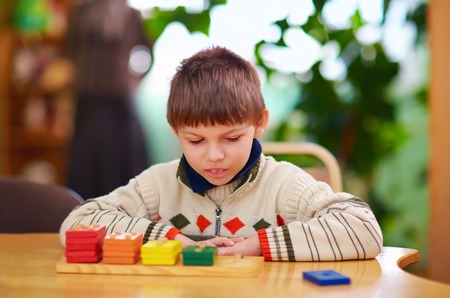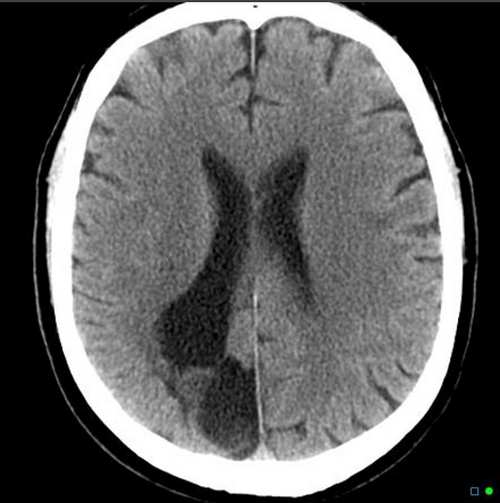Milestones are considered as the stepping stones that your child crosses in the journey of growing up. These milestones help us to determine whether the child is growing normally or not. Speaking short sentences by two years of age and making complete sentences by the age of three are some examples of milestones that each child achieves. Each parent wants that my child learns everything that is taught to him. However some children fail to touch these milestones at the given time and fall in the category of child learning disabilities. Each child is unique and so the problem in learning will be manifested differently in each one. The child could have any of the following child learning disabilities. The commonest ones are reading and learning disabilities.
- Difficulty in reading
- Difficulty in writing
- Inability to remember what is taught to him
- Problem in paying attention
- Difficult concentration
- Poor co-ordination skills
- Inability to stay organised
- Difficulty in understanding the concept related to time
- Inability to follow directions

Signs that your Child has a Learning Disability
The signs of the disability will be manifested depending on the existing problem. The following are some signs that you could look out for in case you suspect a learning disability in your child.
- Difficulty in completing any task
- Lack of concentration in any work
- Inappropriate behavior during social interaction
- Abnormal responses in school surroundings
- Inconsistency in performance at school
- Problems in learning and accepting new things
- Inability to understand new words and concepts
- Unable to perform simple math calculations
- Concept of time is very difficult to comprehend for these children.
- Immature way of talking
- Speaking irrelevantly
When observing a child for the above signs, it is very important to note that one child will not have all these signs. Each type of disability will manifest its own signs. Even two children with the same learning disability will manifest the symptoms differently.
Similar signs called as language learning problems can be seen in a child who is exposed to a new language or a second language that is not his mother tongue. All such factors need to be taken into consideration. The final assessment of a learning disability needs to be done by a professional expert.
Types of Child Learning Disabilities
(a) Dyslexia:
Children with dyslexia have a difficulty in associating words with their sounds. Recognizing words and their spellings is also slow and difficult for them to comprehend. Dyslexia is a common learning disability in kids that comes to light when the child begins going to school. The following are the common signs of dyslexia in a child.
- Delay in speaking
- Poor verbal expression of the things that they need. Example a word is replaced by “thing” rather than actual word.
- Difficulty in learning new words both in reading and pronouncing
- Lack of coordination between written and spoken words
- Inability to understand what the other person is saying
- Slow in learning or picking up new songs and rhymes
- Child will learn to read at a very slow pace
- Difficulty in following instructions and directions
- Plenty of spelling mistakes while writing
- Poor recall memory especially for the numbers, names or addresses known by him
- Unable to distinguish right and left sides
- Writing reverse images or confusing between similar sounding words
- Difficulty in learning foreign languages
(b) Dyscalculia:
This condition is associated with a difficulty in understanding the basic concepts of mathematics, calculations and numbers. The common manifestations are as follows:
- Difficulty in understanding the concepts of mathematics
- Unable to write the sequence of steps in a math problem
- Difficulty in understanding the concept of time sequences.
- Inability to understand the steps in a mathematical problem or calculation
- Difficulty in making cash transactions
- Mathematical problems that are long and extensive are difficulty for them to read and to understand.
(c) Dyspraxia:
Dyspraxia is a disability where the child has difficulty in motor coordination and making good hand eye coordination. Their skills are gross and there is lack of fineness. The following are the common presentations of dyspraxia-
- Clumsiness and dropping things from the hand often
- Difficulty in organizing oneself and things
- Inability to perform small tasks that require good hand eye coordination like solving puzzles, stacking blocks, cutting something etc
- Poor sense of balance
- Sensitivity to loud and abnormal sounds
- Sensitivity to touch. Even clothes that are irritating or itchy cannot be tolerated
(d) Dysgraphia:
This is a condition where the child has poor writing skills. There is abnormal anxiety when holding the pen and so the child is unable to maneuver it properly leading to poor handwriting.
- Disinterest in writing and drawing or any activity using the pen or pencil
- Loss of interest when asked to write
- Poor handwriting which is difficult to understand
- Difficulty in writing words or thoughts in a correct sequence.
- These kids learn to read normally but writing is a problem
- When writing they may skip words or completely omit some words.
- Writing mirror images of the words
- Confusion in writing between similar sounding words like “b” and “d”
How To Help A Child With A Learning Disability
Children with learning disabilities like ADHD-attention deficit hyperactivity syndrome, dyslexia, dysgraphia etc are differently-abled and they surprise their parents about how much they can and cannot do. The challenging task as parents, is to help them cope with their day to day activities without a feeling of inferiority or isolation. Schools for children with learning disabilities help such children to overcome their problems by different and unique teaching techniques.
A child with dysgraphia is made to learn writing of alphabets on sand, clay and other surfaces rather than in a book. The concept of shape of the alphabet is made clear to them. Gradually they are transitioned to a book and pencil. Such methods help the child to overcome the disability.
However in more severe cases of child learning disabilities, the concepts of space and time are disturbed and so the parent must deal with utmost patience and talk to the child before, during and after a particular task. Activities like brushing, bathing must be explained and performed without any rush or hurry. The child should be given simple instructions like close the door, bring a book etc so that they feel useful.
Children who have motor skills disability need to be seen by an occupational therapist who helps them perform fine motor movements to help improve their coordination. This includes peg blocks, matching shapes and holding a pencil.
Children who have difficulty in coping with social situations should be exposed to pretend and play situations so that they can prepare themselves in advance for what is coming.
All such children need constant and loads of appreciation for whatever they do. This not only helps to boost their confidence but also makes them more productive. A good self esteem is very essential to help them grow.

Center for Learning Disability are places that help the parents to deal better with children having child learning disabilities. To handle children who are stubborn and at times violent, parents need to be trained and counselled as to how they can handle the situation most effectively.
The main aim of treating children with such child learning disabilities is to make them capable of carrying out their daily activities.



